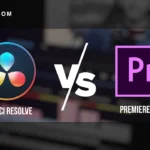Meta AI’s brain-to-text technology, unveiled on January 20, 2025, decodes imagined speech into text using non-invasive electroencephalogram (EEG) recordings and a self-supervised AI model. Achieving up to 73% accuracy for a 100-word vocabulary after only 20 minutes of training, it promises advancements in communication for speech-impaired individuals and human-computer interaction.
Technical Breakdown OF Meta’s Brain-to-Text AI
The processes employ an EEG cap to gather the brain signals from the scalp, concentrating on the language-corresponding area of the brain. These intrusive signals undergo initial processing (like bandpass filtering and ICA) for frequency selection. A deep learning model, presumably an RNN or a transformer, trained on neural data and speech data, receives the signals in real-time and outputs text. Although termed self-supervised, it involves supervised fine-tuning using user-specific EEG data.
All Ads on this website are served by GOOGLE
Performance and Challenges
The system’s key features include its non-invasive nature, real-time decoding, and high accuracy for a limited vocabulary.
However, limitations include a current 100-word vocabulary, dependency on user-specific training, and sensitivity to noise in EEG signals, which can reduce reliability outside controlled settings. These challenges highlight the technology’s early stage and the need for further development to scale to natural language complexity.
Comparison to Neuralink
Unlike Neuralink’s invasive implants, which offer clearer signals but carry surgical risks, Meta’s approach prioritizes safety and accessibility, though it sacrifices precision. In compare, invasive implants, which offer higher signal clarity but require surgery and pose risks like infection, Meta’s approach prioritizes safety and accessibility.
Neuralink’s invasive method captures clearer brain signals, potentially offering better precision, while Meta’s EEG-based system sacrifices some accuracy for non-invasiveness, making it more appealing for those wary of surgical interventions.
USE CASES of Meta’s Brain-to-Text AI
This technology has the potential to improve communication for those suffering from ALS or stroke, as well as control of devices. In relation to media production, it can allow creators to utilize hands-free and silent text entry, increasing accessibility, and creativity in studios.
All Ads on this website are served by GOOGLE
For content developers, the technology can facilitate workflow by enabling hands-free input without the need for speaking. This is advantageous in situations where both hands are busy, for example, when operating cameras, or when there is a need for silence such as during recordings. This can be particularly revolutionary for creators with motor and speech impairments and provide them the ability to communicate their ideas and instructions to a team. Still, media production may be limited because of the training that users will need to undergo and the lack of vocabulary to use. This only means that further studies to improve scalability and reliability are necessary.
Summation
Meta’s brain-to-text AI marks a leap in non-invasive neural interfaces, balancing innovation with practicality. While challenges like vocabulary size and noise sensitivity persist, its development signals a future where thoughts could directly shape digital communication—safely and scalably. As research progresses, it may redefine how we connect minds to machines, including in media production, with potential to enhance creativity and accessibility for content creators.
Meta’s Brain-to-Text AI vs. Neuralink
| Feature | Meta’s Brain-to-Text AI | Neuralink |
|---|---|---|
| Invasiveness | Non-invasive (EEG cap) | Invasive (brain implants) |
| Signal Clarity | Lower (scalp-based) | Higher (direct brain access) |
| Safety Risks | Minimal | Potential (infection, rejection) |
| Accuracy | Up to 73% for 100-word vocabulary | Higher, but exact figures vary |
| Training Time | 20 minutes for user-specific tuning | Longer, due to surgical recovery |
| Applications | Communication, accessibility | Broader, including motor control |
CLOXMAGAZINE, founded by CLOXMEDIA in the UK in 2022, is dedicated to empowering tech developers through comprehensive coverage of technology and AI. It delivers authoritative news, industry analysis, and practical insights on emerging tools, trends, and breakthroughs, keeping its readers at the forefront of innovation.

All Ads on this website are served by GOOGLE






